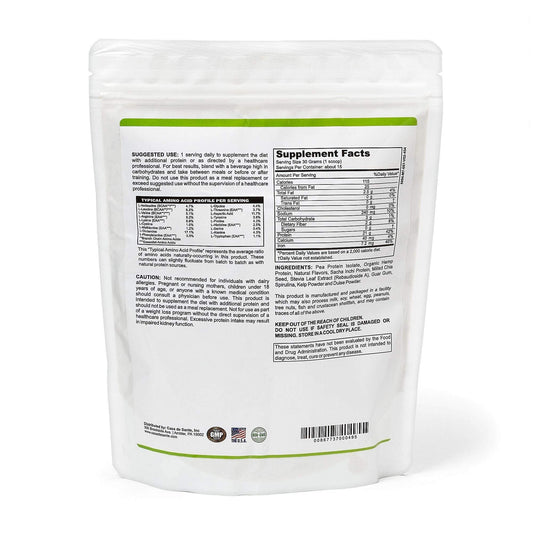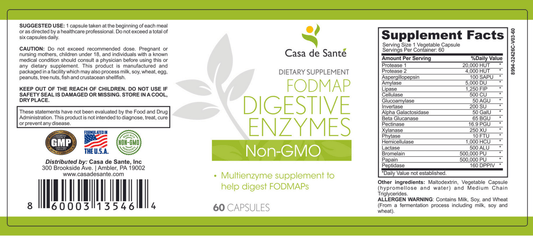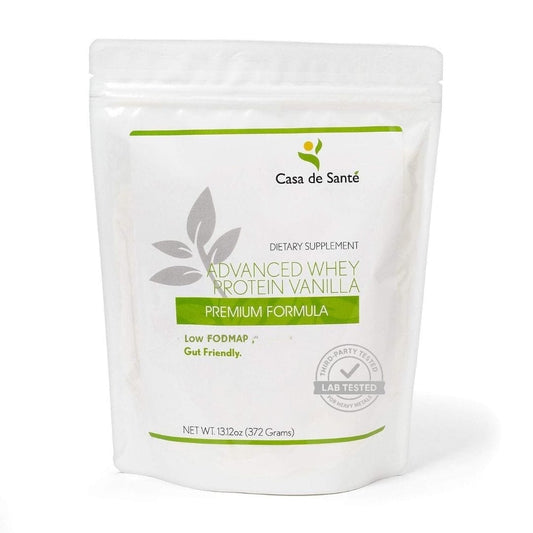Empowerment Through Mobility: 13 Essential Aids for Young People With Chronic Illness
When it comes to living with chronic illness, mobility aids can make a huge difference for young people. These tools help them move around, maintain independence, and manage daily tasks more easily. Whether it’s a wheelchair for getting around or a blood sugar monitor for health management, the right equipment can empower them to lead fuller lives. Here’s a look at 13 mobility aids that are essential for young people dealing with chronic illnesses.
Key Takeaways
- Mobility aids enhance independence and safety for young people with chronic conditions.
- Devices like wheelchairs and walkers allow better movement and participation in daily life.
- Health management tools, such as blood sugar monitors, are crucial for living with chronic illnesses.
- Properly selected mobility aids can significantly improve quality of life and reduce caregiver reliance.
- Access to these aids is vital for promoting overall well-being and autonomy in young individuals.
1. Wheelchairs
Wheelchairs are a game-changer for young people dealing with chronic illness. They provide a way to maintain independence and participate in activities that might otherwise be impossible. It's not just about getting from point A to point B; it's about having the freedom to go to school, hang out with friends, and explore the world.
There are so many different types of wheelchairs out there, it can feel overwhelming. You've got manual wheelchairs, which require you to use your arms to move around. Then there are power wheelchairs, which are battery-operated and controlled with a joystick or other device. Each has its pros and cons, depending on your specific needs and abilities. Finding the right fit is key.
Choosing a wheelchair involves thinking about things like weight, maneuverability, and comfort. Do you need something lightweight that you can easily transport? Or do you need something more heavy-duty that can handle rough terrain? What about seating and support? It's a lot to consider, but it's worth it to find a wheelchair that truly meets your needs.
Here's a quick rundown of things to consider:
- Manual vs. Power: Manual wheelchairs offer essential mobility and are good for upper body strength, while power wheelchairs are better for those with limited upper body function.
- Weight and Portability: Lighter wheelchairs are easier to transport.
- Seating and Support: Proper cushioning and support are important for comfort and preventing pressure sores.
It's also worth looking into accessories and customizations. Things like cushions, armrests, and leg rests can make a big difference in comfort and usability. And don't forget about things like wheelchair bags and cup holders – those little extras can make life a lot easier. Getting the right wheelchair can really improve your quality of life.
2. Walkers

Walkers are another super common mobility aid, and they're not just for older folks! Young people dealing with chronic illnesses often find them incredibly helpful. They provide extra stability and support, which can make a huge difference when you're dealing with fatigue, pain, or balance issues.
There are a few different types of walkers out there, so it's worth exploring what might work best for you. Some have wheels, some don't, and some even have seats built in. It's all about finding the right fit for your needs and lifestyle. Using walkers can significantly improve your ability to move around safely and confidently.
- Standard walkers (no wheels): These offer maximum stability but require you to lift them with each step.
- Two-wheeled walkers: Easier to move than standard walkers, but still provide good support.
- Rollator walkers (three or four wheels): These have hand brakes and often a seat, making them great for longer distances or when you need to rest. The GetGO Classic rollator walker is a popular choice.
Walkers can really open up your world. They can help you participate in activities you might otherwise have to miss out on, like going to school, hanging out with friends, or just running errands. It's all about maintaining your independence and quality of life.
Think about what activities you want to do and what kind of support you need. Talk to your doctor or physical therapist – they can help you figure out the best type of walker for your specific situation. Don't be afraid to try out a few different models before you make a decision. Finding the right walker can be a game-changer!
3. Crutches
Crutches are a classic mobility aid, and for good reason. They're often the go-to for temporary injuries, like a sprained ankle or a broken leg. But they can also be super helpful for young people dealing with chronic conditions that affect their ability to walk or put weight on their legs. The main thing is that they provide support and stability, allowing you to get around while reducing the strain on your lower body.
There are a few different types of crutches to consider. Axillary crutches are the ones that fit under your armpits. They're probably what you picture when you think of crutches. Then there are forearm crutches, also known as Lofstrand crutches, which have a cuff that goes around your forearm. These can offer more freedom of movement and are often preferred for long-term use. Finally, there are platform crutches, which are less common but can be helpful if you have trouble gripping or putting weight on your wrists.
Choosing the right type and making sure they're properly fitted is key to avoiding further injury. A physical therapist can help with this, showing you how to walk with crutches correctly and adjust them to the right height. It's also important to check the rubber tips regularly and replace them when they get worn down to prevent slipping. For those seeking award winning brand support, remember that proper fitting and maintenance are crucial for safe and effective use.
Using crutches can take some getting used to. At first, your arms and shoulders might feel tired, but with practice, it gets easier. It's all about finding the right rhythm and balance. Don't be afraid to take breaks when you need them, and remember to keep your head up and look ahead to maintain good posture.
Here's a quick rundown of things to keep in mind:
- Make sure the crutches are the right height for you.
- Use good posture while walking.
- Replace worn tips to prevent slips.
- Take breaks when needed.
4. Patient Lifts
Patient lifts are a game-changer for anyone dealing with mobility issues, especially when transferring from a bed to a chair, or even just moving around the house. They're designed to reduce the strain on both the patient and the caregiver, making daily life a little easier and a lot safer. I've seen firsthand how much of a difference they can make in maintaining someone's dignity and independence.
Patient lifts are essential for safe and comfortable transfers, reducing the risk of injury for both the user and caregiver. They come in various types, each suited to different needs and environments. It's all about finding the right fit for your specific situation.
Patient lifts aren't just about physical assistance; they're about preserving dignity and promoting independence. They allow individuals to participate more fully in their daily routines, reducing reliance on others and fostering a sense of control over their lives.
5. Hospital Beds
Hospital beds aren't just for hospitals anymore. They're super helpful for young people dealing with chronic illnesses that require extended bed rest or make it hard to get comfortable in a regular bed.
- Adjustable features let you change the bed's position, which can ease pain and make it easier to breathe.
- Side rails add an extra layer of safety, preventing falls.
- They can be a game-changer for managing pressure sores.
Having a hospital bed at home can really improve your quality of life. It's not just about comfort; it's about being able to manage your condition better and maintain some independence.
6. Blood Sugar Monitors
Okay, so managing diabetes can be a real challenge, especially when you're young and trying to live your life. That's where blood sugar monitors come in. They're not just helpful; they're essential for keeping track of your glucose levels and making sure you stay healthy.
Blood sugar monitors allow for immediate feedback on how food, activity, and medication affect your glucose levels. It's like having a personal health assistant right at your fingertips.
Think of it this way:
- You can test your blood sugar before meals to decide how much insulin to take.
- You can test after meals to see how your body reacted to the food.
- You can test before and after exercise to understand how activity impacts your levels.
Using a blood sugar monitor regularly can help you identify patterns and trends, which is super useful for making informed decisions about your diet and lifestyle. It's all about learning what works best for your body.
There are different types of monitors out there. Some require a finger prick, while others, like continuous glucose monitors (CGMs), track your glucose levels automatically throughout the day. CGMs can be a game-changer because they alert you to highs and lows in real-time, which is especially helpful if you're active or have trouble recognizing symptoms. Caregivers can use apps like Nightscout and Sugarmate for remote monitoring of CGMs.
And hey, don't forget that Medicare usually covers blood sugar meters, so that's one less thing to worry about!
7. Oxygen Concentrators
Oxygen concentrators are a game-changer for young people dealing with chronic respiratory issues. Instead of relying on heavy, cumbersome oxygen tanks, these devices pull oxygen from the air around you, concentrating it to deliver a higher, more therapeutic dose. It's like having your own personal oxygen factory!
- They're often much lighter than traditional tanks.
- They eliminate the need for refills, which is super convenient.
- Many models are portable, giving you more freedom to move around.
Oxygen concentrators really help maintain independence. They allow you to participate in activities that might otherwise be too difficult due to breathing problems.
The biggest advantage is the increased mobility and independence they provide. Imagine being able to go to a friend's house, attend a class, or even just walk around the block without being tethered to a heavy tank. That's the power of a portable oxygen concentrator. Advances in technology have led to portable oxygen concentrators that are lightweight and battery-operated, allowing patients to maintain mobility without the constraints of traditional oxygen tanks.
Here's a quick look at some key differences between oxygen concentrators and traditional oxygen tanks:
| Feature | Oxygen Concentrator | Oxygen Tank |
|---|---|---|
| Oxygen Source | Air | Compressed oxygen |
| Portability | Often portable, battery-powered options available | Less portable, requires a cart or carrier |
| Refills | Not required | Requires refills |
| Oxygen Purity | Typically 90-95% | Nearly 100% |
| Cost | Higher initial cost, lower long-term cost | Lower initial cost, higher long-term cost |
It's important to talk to your doctor to determine if an oxygen concentrator is right for you and to get a prescription if needed. Using an oxygen concentrator without a prescription can pose serious health risks. They can help you figure out the right flow rate and ensure you're using the device safely and effectively.
8. CPAP Machines
CPAP (Continuous Positive Airway Pressure) machines are a game-changer for young people dealing with sleep apnea. I remember when my cousin, Sarah, was diagnosed. She was constantly tired, and it was affecting her schoolwork. Turns out, she had sleep apnea, and her doctor recommended a CPAP machine. It made a huge difference! These machines deliver a steady stream of air to keep your airways open while you sleep.
- CPAP machines are vital for managing sleep apnea, ensuring uninterrupted breathing during sleep.
- They help improve sleep quality, leading to increased energy levels and better concentration.
- Modern CPAP devices often come with smart features like sleep tracking, allowing for personalized treatment adjustments.
Using a CPAP machine can feel weird at first. It takes some getting used to wearing a mask while you sleep, and the sound of the machine can be a bit distracting. But trust me, the benefits are worth it. Once you adjust, you'll wake up feeling more refreshed than you have in years.
Resmed solutions are a great option for those looking for innovative CPAP technology. They really do help people lead healthier lives. Medicare often covers CPAP machines if they're deemed medically necessary, so that's something to look into. They are essential for sleep apnea management, especially during nighttime.
9. Bath Chairs
Okay, so bath chairs might not be the coolest thing on this list, but trust me, they're a game-changer for anyone who struggles with balance or fatigue in the shower. I remember when my grandma started using one, it made such a difference in her confidence and ability to handle her own hygiene. It's all about maintaining independence, right?
Bath chairs provide a safe and comfortable seating option in the shower or tub. They come in various styles, from simple stools to chairs with backrests and arms, so you can find one that fits your specific needs.
- Increased safety during bathing
- Reduced risk of falls
- Greater independence in personal care
Bath chairs aren't just for older adults. Young people with chronic illnesses that cause weakness, dizziness, or pain can also benefit greatly from using one. It's about adapting your environment to make life easier and safer, no matter your age.
If you're considering a bath chair, think about things like the height of the seat, the weight capacity, and whether you need armrests or a backrest. Also, make sure it has non-slip feet to prevent it from sliding around in the shower. A good padded shower chair can really make a difference.
10. Commode Chairs
Okay, let's talk commode chairs. I know, not the most glamorous topic, but trust me, when you need one, you really need one. These aren't just for hospitals; they can be a total game-changer for young people dealing with chronic illnesses that make getting to the bathroom difficult.
A commode chair provides a safe and convenient toileting solution right where it's needed. Think about it: less stress, fewer accidents, and a whole lot more independence. It's about making life a little easier when things are already tough.
Having a commode chair can seriously reduce the risk of falls, especially at night. It's all about creating a safer environment and giving you more control over your daily routine. Plus, it can free up caregivers, giving everyone a little more breathing room.
Here's a quick rundown of why they're so helpful:
- Reduces strain and discomfort during toileting.
- Minimizes the risk of falls, especially for those with mobility issues.
- Offers a private and dignified solution for individuals who have difficulty reaching the bathroom.
There are different types too, so you can find one that fits your specific needs. Some have adjustable heights, some have padded seats, and some even fold up for easy storage. Finding the right adjustable raised toilet seat can make a world of difference.
11. Mobility Scooters

Mobility scooters can really open things up for young people dealing with chronic illnesses. I mean, think about it – suddenly, getting around isn't such a huge ordeal. These scooters offer a way to maintain independence and participate more fully in daily life.
I've seen firsthand how much of a difference they can make. My cousin Sarah, who has juvenile arthritis, was practically housebound before she got her scooter. Now, she's zipping around campus, going to classes, and hanging out with friends. It's been amazing to watch her confidence grow.
Mobility scooters come in all shapes and sizes, so it's important to find one that fits your specific needs. Some are designed for indoor use, while others are more rugged and can handle outdoor terrain. Consider things like battery life, turning radius, and weight capacity when making your decision. Also, don't forget about portability – some scooters can be easily disassembled and transported in a car, which is a huge plus for travel.
Choosing the right mobility scooter can feel overwhelming, but it's worth taking the time to do your research and find the perfect fit. Talk to your doctor or a physical therapist for recommendations, and don't be afraid to try out different models before making a purchase. The goal is to find a scooter that empowers you to live your life to the fullest.
Here's a quick rundown of some key considerations:
- Type: Consider whether you need an indoor, outdoor, or all-terrain model.
- Portability: Look for models that can be easily disassembled for transport.
- Features: Think about features like adjustable seats, armrests, and storage baskets.
And remember, mobility aids are a game-changer. They can really improve the quality of life for young people with chronic illnesses.
12. Stair Lifts
Okay, so stairs. They're the bane of existence for a lot of folks, especially when dealing with chronic illness. Stair lifts? They're like a personal elevator just for you and your staircase. I remember my grandma struggling with the stairs, and honestly, it was heartbreaking to watch. A stair lift can really change things.
Stair lifts are a game-changer for regaining independence at home. They allow you to move between floors without the strain and risk of falling. It's not just about physical safety; it's about feeling like you're still in control of your own space.
Think about it: no more dreading going upstairs to bed or downstairs to grab a snack. It's about maintaining a sense of normalcy and freedom. Plus, it can seriously reduce the worry for family members who are constantly concerned about your safety on the stairs. It's a win-win.
I've heard stories of people who were basically confined to one floor of their house before getting a stair lift. Suddenly, they could access their whole home again, participate in family activities, and just feel more connected to their lives. It's a simple device, but the impact can be huge.
Here's a quick rundown of why stair lifts are worth considering:
- Increased safety: Reduces the risk of falls.
- Enhanced independence: Allows you to navigate your home freely.
- Improved quality of life: Reduces stress and worry about mobility.
There are a few different types of stair lifts, so it's worth doing some research to find the one that best fits your needs and your staircase. Some are designed for straight stairs, while others can handle curved staircases. Some even have features like swivel seats and remote controls. It's all about finding the right fit. You can find more information about stair lift benefits online.
13. Therapeutic Footwear
Therapeutic footwear is more than just shoes; they're a key part of managing foot-related issues that often come with chronic illnesses. Finding the right pair can seriously improve comfort and mobility. It's all about getting the right fit and support to keep you moving.
- Custom Orthotics: These are insoles made just for your feet, offering support where you need it most.
- Extra-Depth Shoes: Designed with more room, they accommodate orthotics and swollen feet.
- Adjustable Closures: Think Velcro straps or laces that are easy to adjust throughout the day as needed.
Getting the right therapeutic footwear can make a huge difference in daily life. It's not just about comfort; it's about preventing further complications and staying active.
Final Thoughts on Mobility Aids for Young People
In the end, mobility aids are more than just tools; they’re lifelines for young people dealing with chronic illnesses. These devices help them regain some control over their lives, making everyday tasks easier and safer. Whether it’s a wheelchair, walker, or any other aid, each one plays a part in boosting confidence and independence. It’s crucial to remember that having the right support can really change the game. So, if you or someone you know is facing mobility challenges, don’t hesitate to explore these options. The right aid can make a world of difference, opening doors to new experiences and opportunities.
Frequently Asked Questions
What are mobility aids?
Mobility aids are tools that help people with limited movement get around more easily. They can include things like wheelchairs, walkers, and crutches.
How do wheelchairs help young people?
Wheelchairs give young people who can't walk the ability to move around independently, improving their freedom and quality of life.
What is a patient lift?
A patient lift is a device that helps caregivers move patients safely from one place to another, like from a bed to a chair, without risking injury.
Why are blood sugar monitors important?
Blood sugar monitors help people with diabetes keep track of their sugar levels, which is important for managing their health.
What is a CPAP machine used for?
A CPAP machine helps people with sleep apnea breathe better while they sleep, making it easier for them to get a good night's rest.
How do bath chairs improve safety?
Bath chairs provide a safe place for people to sit while bathing, reducing the risk of slips and falls in the bathroom.




























